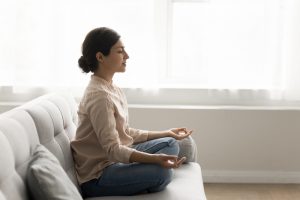Expert reveals the common garden mistakes making your outdoor space look cold and tired.
With sunnier days in sight, many will be taking time to get their outdoor spaces ready for the summer months. From lack of nature to positioning furniture in the wrong space, there are a few mistakes that can prevent your garden from being an outdoor sanctuary.
Molly Woodward-Moor, creative director at Stone Superstore shares the five common mistakes that are made in gardens that leave it feeling stark and tired. Additionally, she shares quick and affordable tips to keep your garden looking bright and lively throughout Spring and Summer.

Lack of nature
Small gardens especially are commonly fully paved and can often lack natural greenery, making it look lifeless and uninviting.
Try adding low maintenance flowers, herbs, and plants such as peonies, rosemary and marigolds to add a touch of visual interest and breathe life into your outdoor space by attracting pollinators.
Additionally, using your wall space to create a vertical garden is a great idea for those with limited outdoor space such as urban terraces and balconies. Adding planters, wall-mounted shelving, or pallets to grow herbs and flowers can also create an illusion of a bigger space as your eye will naturally be drawn upwards.
Neglecting colour and décor
Neglecting colour in the garden can result in it looking cold, dull and monotonous. Whilst white or overly grey gardens can often give a feeling of serenity, if not balanced with warmth, complimentary planting and other aspects of visual interest, these colours can often leave a garden feeling sterile.
Choosing complimentary tones or even contrasting colours, which are opposite each other on the colour wheel, can provide a touch of vibrancy. Colour schemes can be implemented in many ways, using paving slabs, furniture, flowers or decorative accessories.

Lack of lighting sources
Many people tend to overlook outdoor lighting and only focus on the daytime appearance of their gardens. However, they may not realise that using different lighting features can add to the ambience as well as the safety of your outdoor space – allowing you to spend more time outside once the sun sets to make the most of your garden.
There are many simple ways to add ambient lighting in your garden, for example using solar powered fairy lights entwined in trees or along your garden fence. You could also consider outdoor candle lanterns to add a romantic atmosphere to your space, these typically work well for dinner set ups.
Additionally, consider using strip lighting or spotlights along pathways and steps to improve nighttime visibility ensuring safe movement throughout the garden, while also enhancing the atmosphere. Solar lights are best as they typically come with sensors and automatically turn on when energy from the sun is no longer available.
Lack of patio maintenance
Overlooking regular maintenance is a common mistake people make, that can cause your paving to deteriorate and end up being costly over time.
To keep your patio looking its best, it’s a good idea to give your tiles a thorough clean at least once or twice a year. If sealed and installed properly, all your patio tiles should need to get clean is as simple as hot and soapy water. Diluting household washing up liquid, which you can get for as little as 60p, is gentle enough not to damage your tiles, yet effective at lifting dirt and stains.
Additionally, simple preventative tasks like weeding can help avoid cracks in your patio and boost its lifespan, as well as improving safety. If you have natural stone tiles it’s important to seal them periodically to keep a protective barrier, which will maintain their appearance and ensure they last longer.

Putting patio furniture or outdoor storage on grass
Whilst having a shed at the backend of the lawn or placing patio furniture on the grass for social events might seem like a good use of your garden space, it could lead to damage.
Heavy furniture and legs from garden chairs and table can compress the grass, eventually creating bare patches of lawn or yellow/brown patches where the grass is dead and will need reseeding.
If your space is limited and grass is the only area you have to work with, there are a few things you can do to prevent damage. Consider adding furniture caps to the bottom of table and chair legs to help minimize the pressure on the grass and make sure to regularly move the furniture around to prevent compression on the grass.





